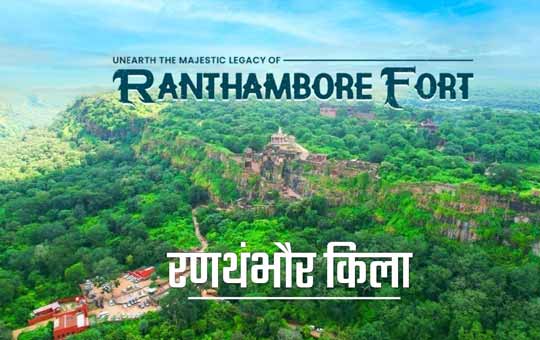Rajasthan, the land of kings, is renowned for its rich cultural heritage, magnificent forts, and royal palaces. Several monuments and sites in this northwestern Indian state have been recognized by UNESCO for their historical, architectural, and cultural significance. Here are eight UNESCO World Heritage Sites in Rajasthan that showcase the grandeur and legacy of the region.
- Hill Forts of Rajasthan
The Hill Forts of Rajasthan comprise six majestic forts spread across the state: Chittorgarh, Kumbhalgarh, Ranthambore, Amber, Jaisalmer, and Gagron. Recognized collectively as a UNESCO World Heritage Site in 2013, these forts were built between the 8th and 18th centuries. They reflect Rajput military architecture and their strategic positions on hills provided natural defense. - Jantar Mantar, Jaipur
Built in the early 18th century by Maharaja Sawai Jai Singh II, Jantar Mantar is a collection of nineteen astronomical instruments. It was inscribed as a World Heritage Site in 2010. This observatory reflects the scientific and architectural advancements of its time, especially in astronomy and timekeeping. - Keoladeo National Park, Bharatpur
Originally a royal hunting ground, Keoladeo National Park is now one of the finest bird sanctuaries in the world. It became a World Heritage Site in 1985. The park is home to over 370 species of birds, including the rare Siberian crane, making it a paradise for ornithologists and nature lovers. - Jaipur – The Pink City
The historic city of Jaipur was inscribed as a UNESCO World Heritage Site in 2019. Founded in 1727 by Maharaja Jai Singh II, the city is known for its unique blend of Mughal and Rajput architecture, wide streets, and geometrically planned layout. Iconic landmarks like the Hawa Mahal, City Palace, and the bustling bazaars contribute to its charm. - Amber Fort (part of Hill Forts)
Although part of the Hill Forts group, Amber Fort deserves special mention. Located just outside Jaipur, it is a stunning blend of Hindu and Mughal architecture, built with red sandstone and marble. Its intricate mirror work, Sheesh Mahal, and elephant rides up the ramp make it a favorite among tourists. - Chittorgarh Fort
One of the largest forts in India, Chittorgarh symbolizes Rajput valor and sacrifice. It has witnessed many sieges and heroic tales, including that of Rani Padmini. Its palaces, temples, and towers stand as reminders of a glorious past.
These World Heritage Sites reflect Rajasthan’s rich legacy of architecture, culture, and natural beauty. Each site tells a unique story, offering travelers a glimpse into the valor, artistry, and ecological diversity of the region. A visit to these places is truly a journey through the royal past of India.
